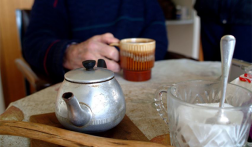One of the relatively new areas of technology that is rapidly growing right now is in ‘wearable technology’.
There are many different uses for wearable technology. The old Sony Walkman, introduced back in 1979, which connected your music collection to your belt and delivered it to your ears by a headset was an early example. But the thing I find especially exciting about the recent proliferation of wearable technology is the important benefits it can offer to consumers, particularly in the area of health. Increasingly, wearable health devices can not only keep us in good shape, but keep us out of hospital and aged care.
There are so many wearable devices available now – which come in the form of wristbands, watches, earphones, glasses and even headwear and clothing – designed to automatically track your physical activity, sleep patterns, heart rate, mood and calorie intake, among other things. The much anticipated and just recently released Apple watch does all these things and more but it’s not the only example.
But the really interesting area for wearable health technology is in the way that they can connect with health professionals, health records, and our networks of family and friends in helpful ways to keep us safe, well and independent. Health administrators, researchers and engineers are increasingly collaborating to develop devices and systems that can help us to manage a wide range of health conditions in our own homes without needing an emergency ambulance dash to hospital when the condition deteriorates.
The earlier we intervene in an illness, the more likely it is that we can get our health back on track and avoid hospital.
These things work through the person wearing sensors, devices around the wrist or neck or other part of their body; or even clothes with a built-in sensor that can detect symptoms of concern. The technology then transmits a message to the hospital, GP practice or other health professional, perhaps via a mobile phone. The information can be assessed remotely and action taken from there. At one end of the spectrum it may just be a phone call response and making a time for a review or consultation. At the other end of the spectrum health professionals can be rapidly dispatched to treat the problem in the person’s home.
![Many people already monitor their health at home [photo courtesy of Tunstall]](http://frankandearnest.net.au/wp-content/uploads/2015/05/Tunstall-WSD-300x242.jpg)
For me, the future of these and other things, connecting wirelessly and automatically to the health system and our health records is of enormous benefit, not just for us, but for the health system itself. It’s the old ‘stitch in time’ approach. The earlier we intervene in an illness, the more likely it is that we can get our health back on track and avoid hospital visits. Admissions to hospital are not only stressful, disruptive and often disorienting (even dangerous) to ourselves; but they are immensely costly to the health system.
And experts say, wearable technologies will become smaller and more discreet, even invisible over time, quietly networking with sensors embedded in our environments. They’re even being integrated into clothing. (‘Smart clothing’ is a whole other story for another day.)
Sound like a good thing? It won’t have enormous appeal to everyone but it actually makes a lot of sense to me. And for all the cash-strapped health services around the world, struggling with increasing demand and rising costs – this direction in healthcare is a potential lifeboat.
Confession: For Christmas last year, I bought his and hers ‘health tracker’ devices for my husband and me. It was my idea but my husband – a health professional – was keen to explore the benefits of these things himself. Since then, via these wrist-worn bands, we have religiously observed our activity levels, counted our daily ‘steps’, totted up our weekly kilometres and noted our sleep patterns. There are many functions that we haven’t used but for us right now, the shame of knowing you have hardly moved from your chair all day (it vibrates and tells you to MOVE if you’ve been inactive for too long) is enough to get us making up for it later. Going to the gym, walking to the shops, giving the dog an extra round of the park. So it definitely works at that level for us and no doubt it will do even more in the future. Of course, our model has already been superseded…




